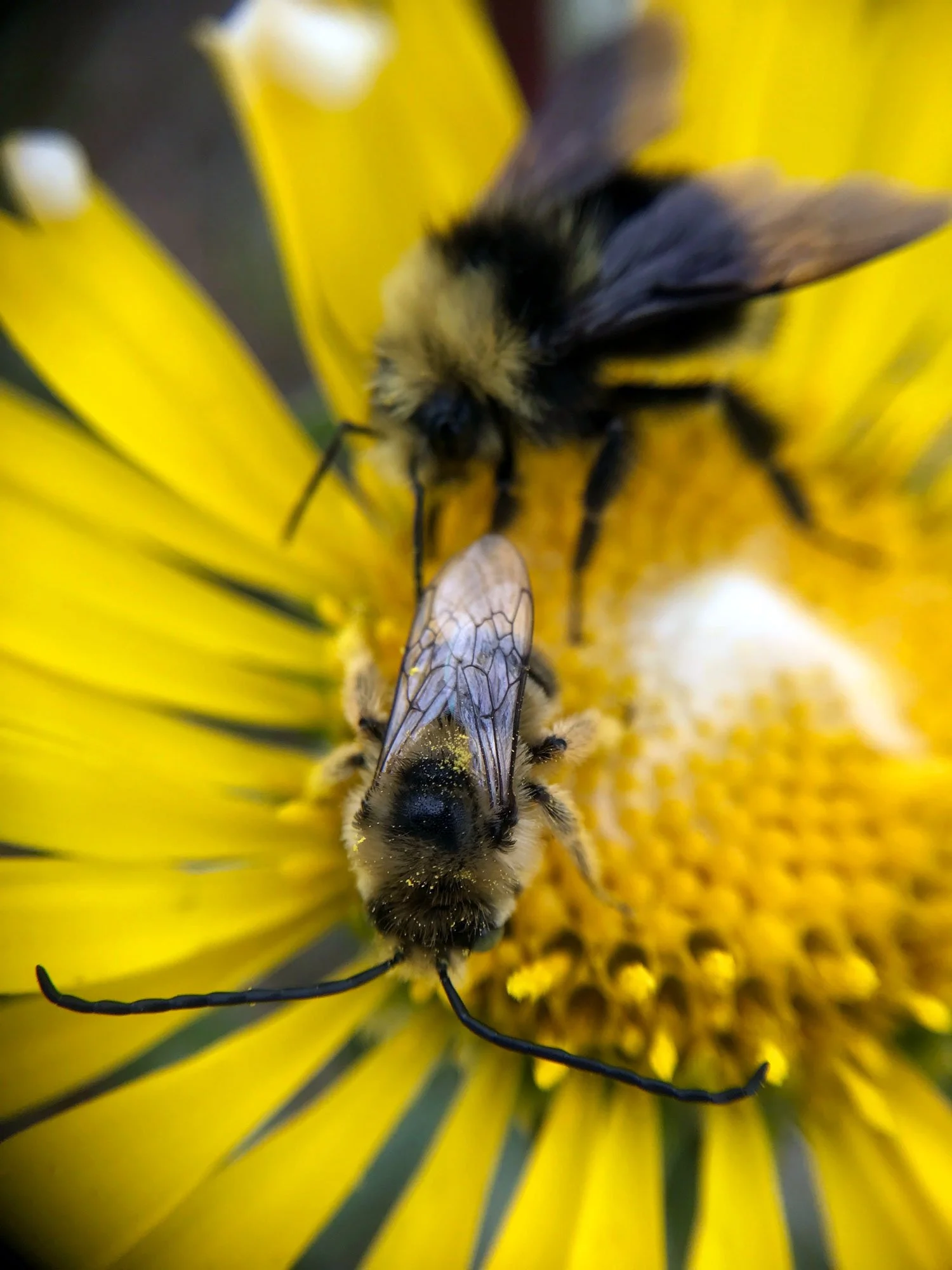The buzz at Abbotts Lagoon
In early July, I hiked to the Abbotts Lagoon dunes in search of a rare butterfly and flower — the Point Reyes Silverspot (Argynnis zerene ssp. puntareyes), a Zerene Fritillary butterfly, and the San Francisco Spineflower (Chorizanthe cuspidata). How wonderful it was to see the spineflower growing abundantly along the trail and in the dunes. I was not so lucky in my search for the butterfly. I found the perfect spot to watch for one in the dunes among some of the butterfly’s favorite flowers — gumplants and coyote mint, however, it was cool and windy so not surprising that I didn’t see any.
Read my earlier post Where to find a rare butterfly for other hot spots to search.
Two big questions
Before writing this post, I had two big questions to research and I was eager to know the answers. Was the Myrtle’s Silverspot the same butterfly as the Point Reyes Silverspot? And how do you tell the difference between the two varieties of spineflower found in Point Reyes? I took these questions to the experts on iNaturalist and got fast answers.
The Zerene Fritillary butterfly
The naturalist who goes by the handle Icosahedron explained “The Zerene fritillaries are divided into an unwieldy number of subspecies, all subject to review and change. Myrtle's Silverspot was described in San Mateo county, and until recently the zerene in Point Reyes were included. That's why records of North Bay fritillaries were all called Myrtle's Silverspots. The current thinking is that Myrtle's is extinct, and the Marin/Sonoma coastal zerene are subspecies puntareyes. Somewhere North of the Russian River you'll run into Behren's Silverspot, and at the Oregon border, the Oregon Silverspot.”
San Francisco Spineflower
There are two subspecies of the prickly San Francisco Spineflower (Chorizanthe cuspidata), both rare, which looked identical to me. David Greenberger, Rare Plant Chair for the Marin Chapter of the California Native Plant Society explained the difference and noted that both varieties are present at Abbotts Lagoon:
Chorizanthe cuspidata var. cuspidata has little hooks at the end of the involucre awns (the 'spines'). Common name: San Francisco Bay Spineflower
Chorizanthe cuspidata var. villosa has all straight spines. Common name: Woolly-headed Spineflower
In my opinion the first two photos below are var. villosa and the last photo is var. cuspidata. You can see the tiny hooks better in the larger image.
Chorizanthe cuspidata var. cuspidata has barely perceptible tiny hooks at the end of the spines
“You don’t always find the thing you seek but if you explore with your senses open to discovery you will find the magic that is there. ”
On this day, the magic was bees! So many bumblebees! They are sturdy and can fly more easily in the wind than many other insects. Often, these fast-moving, shy pollinators elude my camera as they buzz quickly between flowers. On this day, they lingered on each flower making it possible to get many closeup shots. Bees are a joy to watch as they work a flower — standing upside down, sideways and crawling all over it with their fuzzy yellow and black bodies collecting pollen. One particular gumplant was a bee magnet attracting two different species of bees at the same time. Another bee favorite was seaside buckwheat, the round pink and white flower below that looks like a cake pop.
One of the most common bumblebees in Point Reyes is the Yellow-faced Bumble Bee (Bombus vosnesenskii). I believe most of the bees in the photos are this type except the bee with the long antennae who is a longhorn bee, technically a member of Genus Eucera Subgenus Synhalonia. You can see it’s not quite as large as the bumblebee behind it on the flower. Eucera are solitary bees that nest underground. They are found all over the world.
The Yellow-faced Bumble Bee is native to the west coast and is the most abundant species of bee in this range. It’s found in both urban and agricultural areas where it prefers foraging in places with a variety of flowers and will travel longer distances to find these spots. This may provide more nutrients to the bee and greater food security.
Watching bees visit flowers is one of the most satisfying things to do. If you want to see lots of bees at Abbotts Lagoon, head for the bluff above the lagoon. Take the narrow dirt path up the bluff hill to the left just before the bridge over the lagoon. Head right at the top of the path. Weave through the overgrown grasses mingled with poison oak and you’ll arrive at one of the most scenic spots in Point Reyes. Even if you don’t find bees, you will find magic there.
Bees at Abbotts Lagoon in summer
Bumble Bee Atlas Project
Read about the Bumble Bee Atlas Project or visit the project website for more information. This is a fabulous opportunity to participate as a citizen scientist in an important project to map the diversity and abundance of bumble bees across California.










